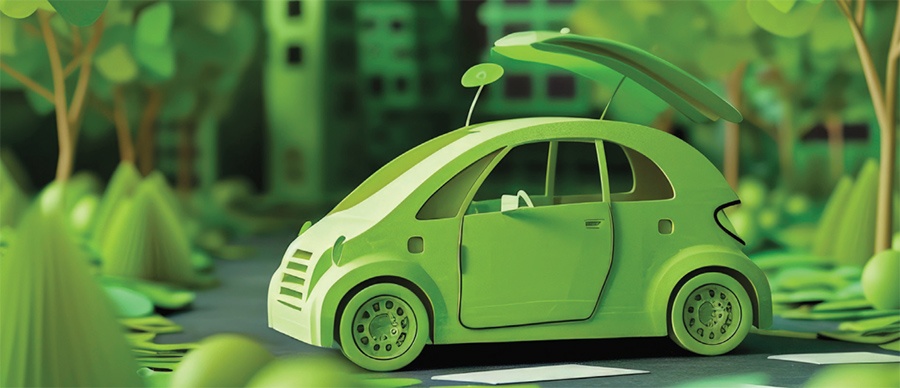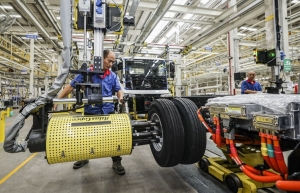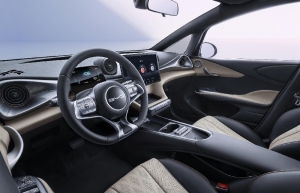Hybrid vehicles are strong step but not final answer
With more than 10 models at selling prices from $20,000 to over $52,000, the hybrid car market in Vietnam has become vibrant and diverse, according to a report from the Vietnam Automobile Manufacturers Association (VAMA) in mid-August.
 |
| Hybrid vehicles are strong step but not final answer |
In contrast to cars with traditional engines, which are suffering from slower sales, the hybrid car market in Vietnam is in short supply. Models such as the Toyota Innova Cross 2.0 HEV, Corolla Cross 1.8 HEV, and Honda CR-Ve are of most interest.
This popularity has contributed to hybrid sales growth, although it has not achieved a full breakthrough, the VAMA reported. The total sales of the association members reached 28,920 vehicles in July, including almost 700 units in all types of mild hybrid, plug-in hybrid, and full hybrid.
The number of hybrid cars sold in July increased by 119 units as compared to June, equivalent to 17.2 per cent. “Although this figure is still modest compared to internal combustion engine cars and electric cars, mainly taxis, it reflects a significant increase in the popularity of hybrid cars in Vietnam,” the VAMA reported.
Shortly, the Vietnamese car market is expected to become more exciting with the entry of many new recruits. Suzuki launched the XL7 hybrid model on August 20 to replace the Ertiga hybrid, for example, and is expected to become its flagship product.
At the Vietnam Motor Show in October, Honda will also release the 2024 Civic hybrid model and open deposits for this version.
In May, BYD Vietnam announced plans to launch a new pickup model, equipped with an advanced hybrid powertrain, which is expected to be available on the market soon.
Haval, another Chinese car brand, is launching a new B-size SUV in Vietnam called the Jolion Hybrid, aiming to create fierce competition with the Toyota Corolla Cross and Yaris Cross hybrid models.
However, hybrid cars still emit into the environment, while Vietnam has a clear net-zero roadmap in which, by 2050, all vehicles in transport and production must be electric and use clean energy with carbon emissions of zero.
Phan Le Hoang Linh, manufacturing head under the Department of Industry at the Ministry of Industry and Trade, said that with its fuel economy advantages, significantly reducing carbon emissions and noise - and not dependent on charging station infrastructure like battery EVs - hybrid cars are a reasonable alternative in the complete transition to electric cars.
“The two types of hybrid cars, hybrid EVs and plug-in hybrid EVs with external charging, still use internal combustion engines and emit some carbon. However, these two lines are being developed worldwide in different ways.”
China has enacted a strategy that half of all sales by 2035 will be hybrid EVs. Similarly, the United States also sets a target of half of all cars sold being hybrids by 2030. Japan will still focus on hybrid and fuel-cell EVs in the next 20 years, in addition to researching and developing some hydrogen-powered internal combustion engine vehicles.
“Excepting the European market, at least for the next 10 years, most major markets in the world still have plans to develop hybrid e-vehicles as an intermediate solution towards battery EVs, and Vietnam is also following this trend,” Linh emphasised.
Hybrid vehicles and battery EVs are rapidly changing the habits of Vietnamese people using green cars. This is also consistent with the nation’s roadmap for green energy conversion and emission reduction of the transport sector.
The roadmap said that the production, assembly, import, and conversion to EVs by 2030, including hybrid vehicles, will be promoted. In the period from 2031-2040, the production, assembly, and import of cars and motorbikes using fossil fuels will be gradually reduced and eventually stopped, while all road vehicles must use electricity and green energy by 2050.
“In the context that EVs are struggling with charging station infrastructure and power sources, hybrid vehicles have a valuable opportunity for development and are considered an extremely effective intermediate step before starting to completely switch to using zero-emission EVs in 2040-2050,” Linh said.
However, Vu Tan Cong, deputy general director of Vietnam Automobile Industry and Trade Consulting, noted that hybrid and EVs still cause environmental pollution.
“Hybrid vehicles still discharge carbon, while the majority of power resources for EVs are causing a lot of environmental pollution. Of these, two-thirds of all power sources are coal-fired thermal power and gas turbine power, which cause a lot of environmental pollution now,” Cong said.
“In addition, when they reach the end of their useful life, the batteries must be properly disposed of to avoid polluting the environment. Thoroughly disposing of these expired batteries is costly and challenging,” he added.
 | Chinese EV giant BYD posts 24.4 per cent rise in profit Leading Chinese automaker BYD posted on Wednesday a 24.4 percent rise in net profit for the first half of 2024, boosted by continuing strong demand for electric cars in its home and overseas markets. |
 | BYD commits to convenient offerings for vehicle owners Greening the automotive industry in Vietnam involves companies like BYD Vietnam, which is making efforts to contribute to the process. Vo Minh Luc, CEO of BYD Vietnam, told VIR’s Hara Nguyen about the company’s plans to deliver the most convenient experience to users. |
 | Pointed pivot can ensure EV success Vietnam’s journey towards electric vehicle adoption and reduced emissions, while challenging, can be achieved through strategic planning, supportive tax policies, and robust infrastructure to meet its green transformation goals. |
What the stars mean:
★ Poor ★ ★ Promising ★★★ Good ★★★★ Very good ★★★★★ Exceptional
Related Contents
Latest News
More News
- Businesses ramp up production as year-end orders surge (December 30, 2025 | 10:05)
- Vietjet chairwoman awarded Labour Hero title (December 29, 2025 | 13:06)
- How to unlock ESG value through green innovation (December 29, 2025 | 10:03)
- AI reshapes media and advertising industry (December 29, 2025 | 08:33)
- FPT and GELEX sign deal to develop blockchain tech for global markets (December 29, 2025 | 08:29)
- Vietnam’s GDP forecast to grow by 9 per cent in 2026 (December 29, 2025 | 08:29)
- Women entrepreneurs are key to Vietnam’s economic growth (December 29, 2025 | 08:00)
- Vietnam's top 500 value-creating enterprises announced (December 27, 2025 | 08:00)
- The PAN Group shaping a better future with ESG strategy (December 26, 2025 | 09:00)
- Masan Consumer officially lists on HSX, marking the next phase of value creation (December 25, 2025 | 13:20)

 Tag:
Tag:




















 Mobile Version
Mobile Version